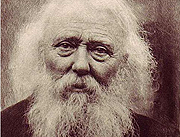A Guideline through the interwoven Histories of Radical Culture

keeps substantial collections on the history and practice of wood engraving, a printing technique that held central significance for the rise of the illustrated press as a mass medium. This historical development is epitomized by William James Linton, an engraver, publisher and influential historian of xylography, who, together with his workshop, was responsible for the major part of the illustration in the «London Illustrated News», the first illustrated weekly magazine to deal with political faits divers. In his career, a relationship between the artistic ethos pertaining to relief printing practices and an uncompromising republican-democratic stance often described as «radical» becomes clearly visible. This interrelation can be traced back to the 18th and early 19th century’s rich culture of pamphlet and relief printing, which has found its most splendid expression in the revolutionary prints of artist-poet William Blake and his technique of «illuminated printing» and is an equally constitutive part of this archive’s activities.
A closer engagement with the artistic views and the ideological climate specific to the so-called «generation 48», a generation that, apart from Linton, the unresting protagonist of the early English Socialist movement, also counted individuals such as Charles Dickens, Karl Marx, Georg Büchner or Michail Bakunin among its contemporaries, must seem necessary to come to any kind of understanding of the ecstatic early founding days of illustrated mass publications with the simultaneous rise of imagery of social enlightenment. For only through the development of the relief printing techniques of wood engraving it became possible to combine detailed pictorial and textual information for a mass audience and thus meet the then quickly growing requirements for a universally accessible and understandable transmission of information.
In quite peculiar ways, the early days of xylography saw the combination of a painstakingly detailed form of observation – a quality specific to classic gravure printing – with the expressive discursive definition granted by the fine lineaments of wood engraving. By the end of the century, wood engraving as a mechanic reproduction technique had not only been made obsolete by the new raster-based modes of printing – through the introduction of uniform, machine-driven hachure and impressionist pointillisms, it had also moved into an artistic impasse.
More and more approaching the blurred aesthetic so characteristic of its photographic basic, xylography had eventually lost all its scriptural obstinacy. The gradual loss of inherent faculties of expression was a core topic within the agenda of Linton, the irascible theoretician of xylography. In the same way in which he negated any claim of artistic autonomy coming from an elaborate xylographic photorealism, he granted it photography as early as 1878, at a time when it was still widely and purely seen as a craft, an auxiliary medium.
With his own poetic, pictorial, pedagogical and publishing activities clearly standing in the succession of William Blake, Linton also represents an important link to the fin-de-siècle Arts & Crafts movement with its roughly communist undercurrents. In the 1930s, practices of artistic relief printing, again linked to imageries of social reformism and revolution, which were extended by this movement saw a revival – an almost world-wide one, influencing developments in Europe, the Americas, the Soviet Union and China. But this comeback was to end abruptly after a very short time, when the all-encompassing triumph of abstraction in art resulting from the ideological confrontations after the Second World War broke through
Simon Lewis «..the wood for the trees»
 original size 10x10 cm
original size 10x10 cm
The process of building the William James Linton Archive has been substantially inspired by the artistic mindset that becomes apparent in the microscopically detailed miniature painting of artist Simon Lewis. In this sense, the painting «...the wood for the trees», measuring only 10 x 10 cm, was created between 1998 and 2000 in his Denmark, Lewis’s adopted country, is a true cornerstone of the archive. By deploying an extremely meticulous, additive technique of oil painting, Lewis reaches into depths otherwise inaccessible to painting, and most of all to contemporary painting. Significantly, Lewis has chosen a xylographic printing plate as the carrier for this manifesto of an artistic radicalism.



